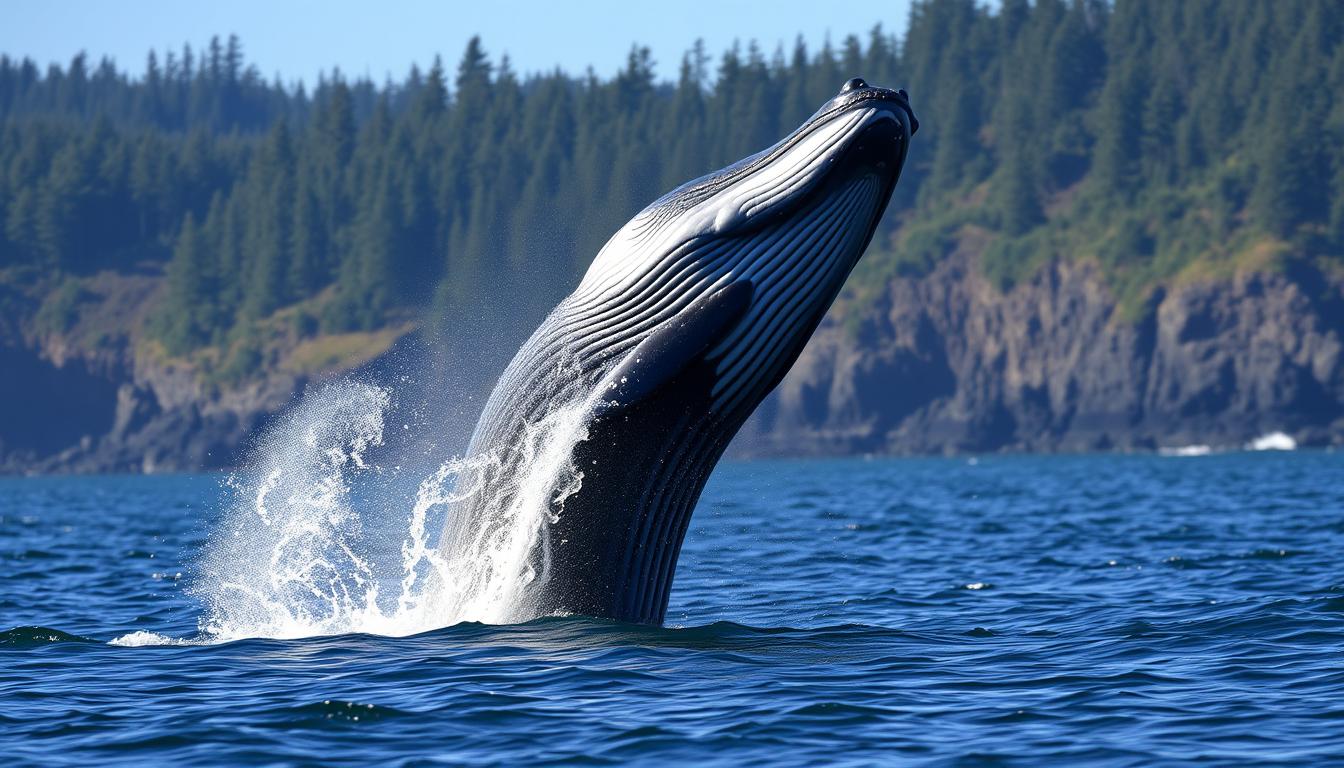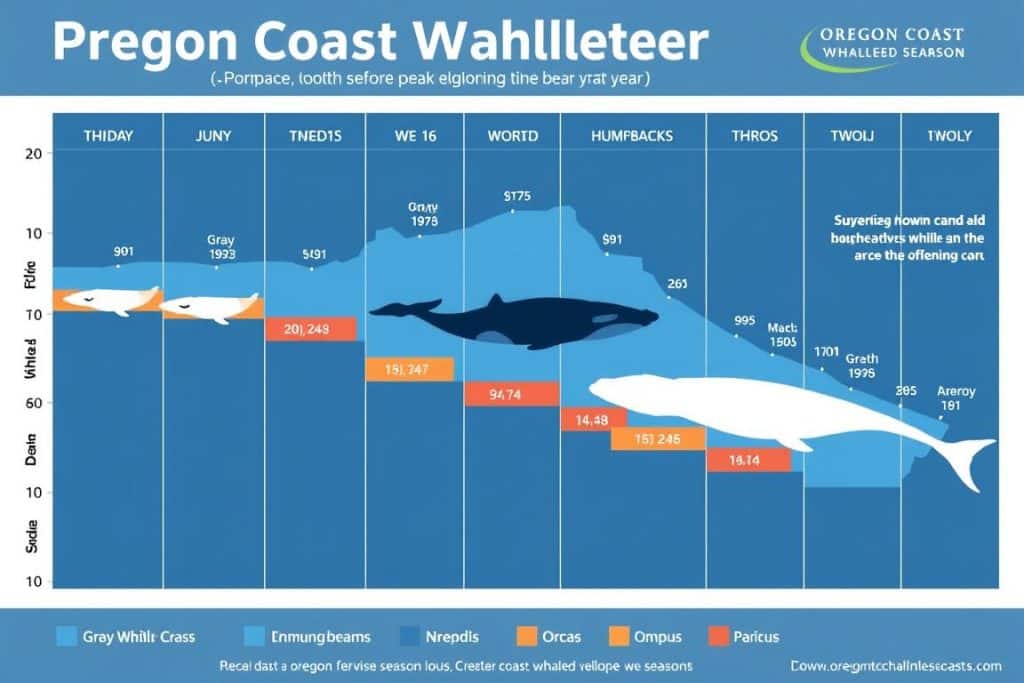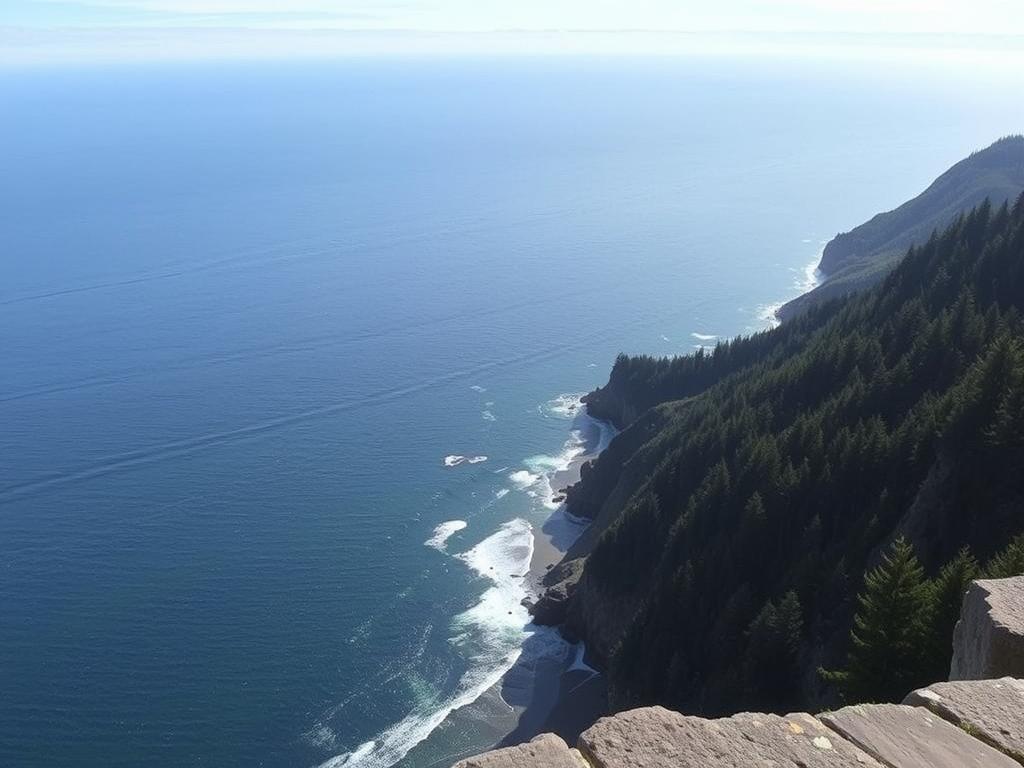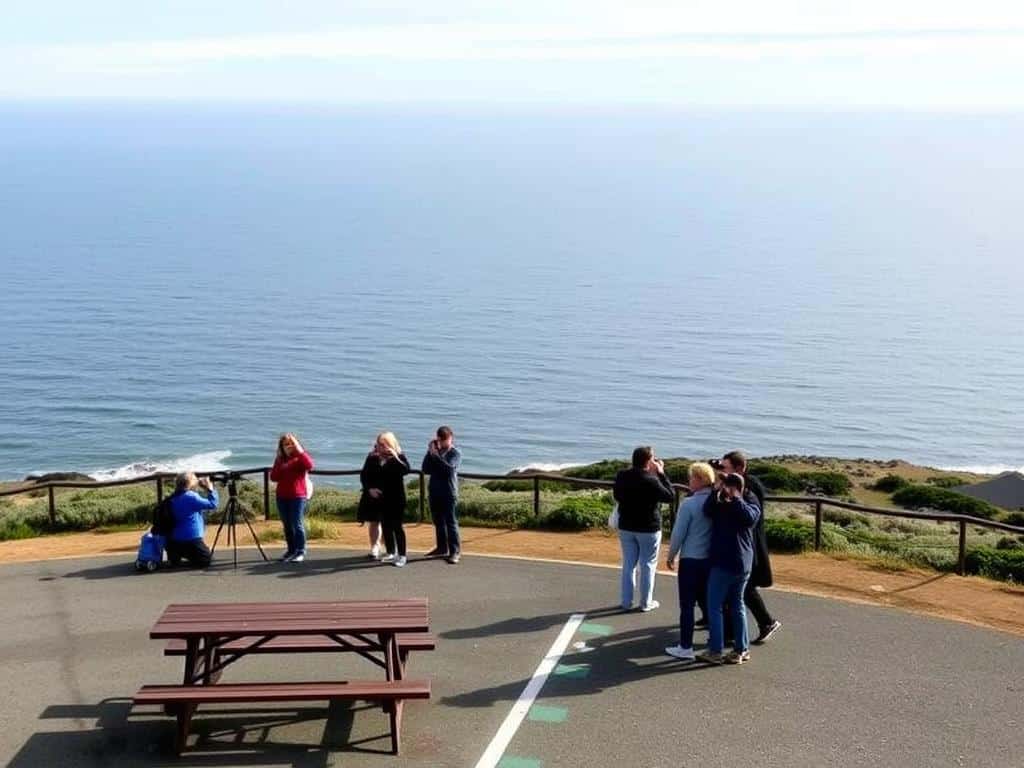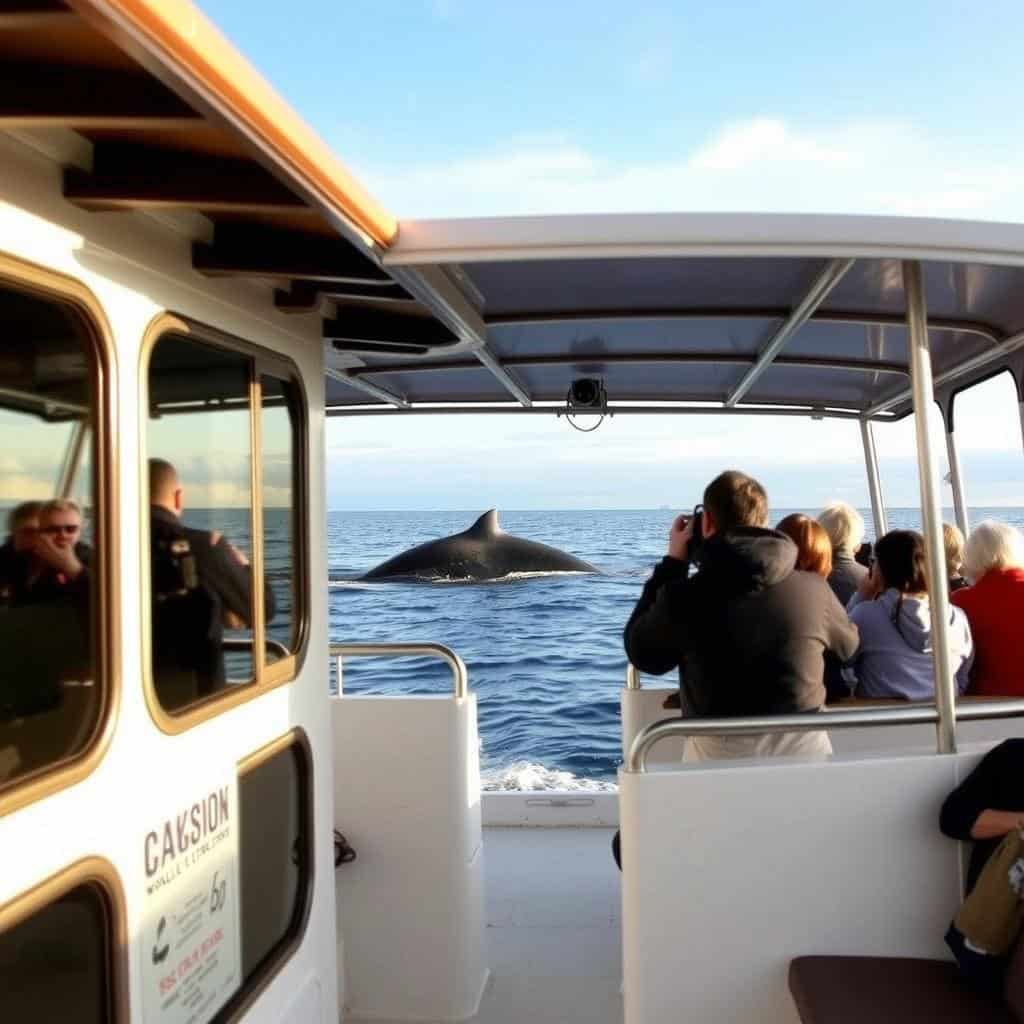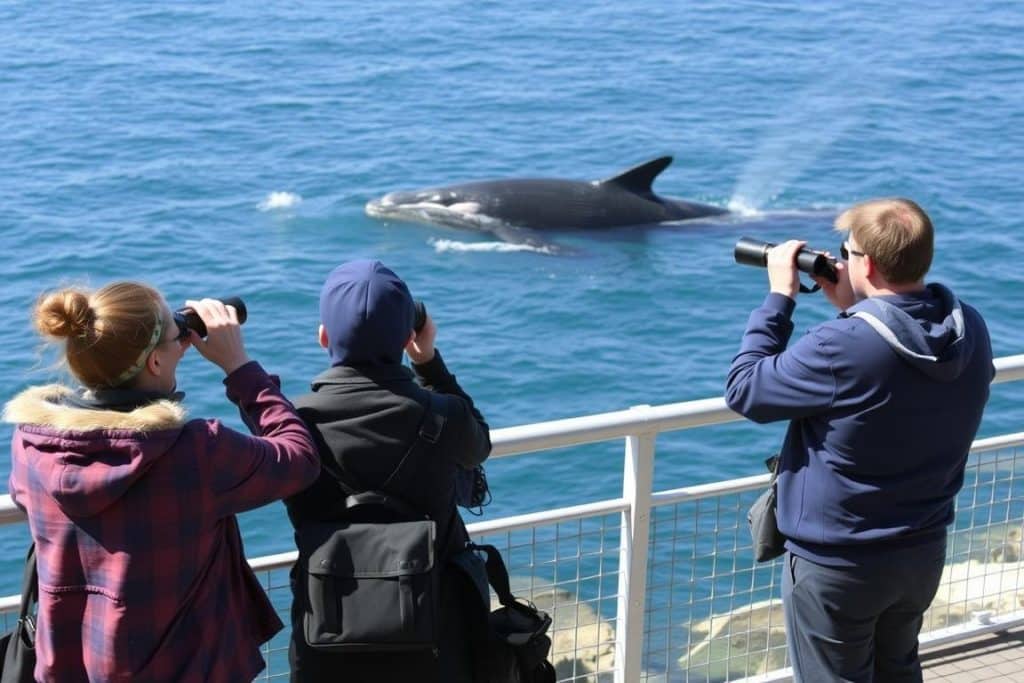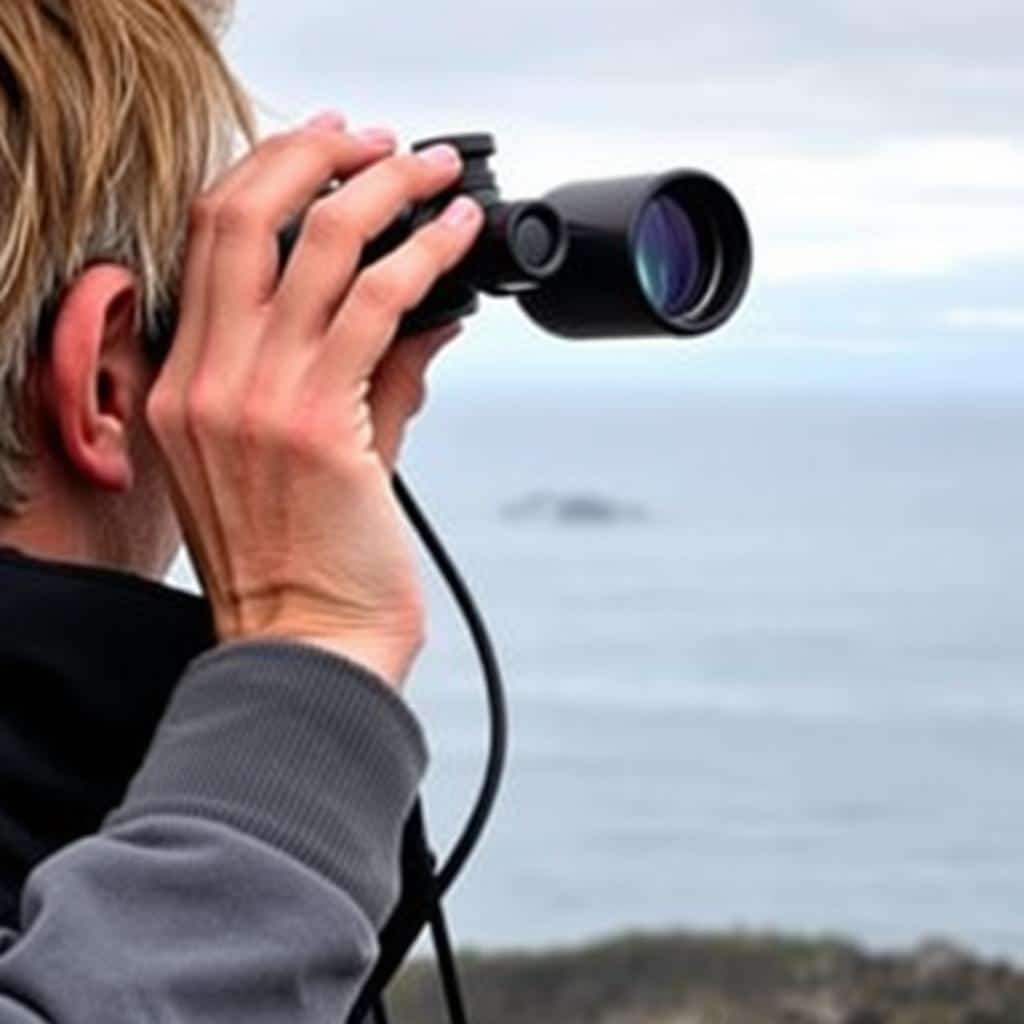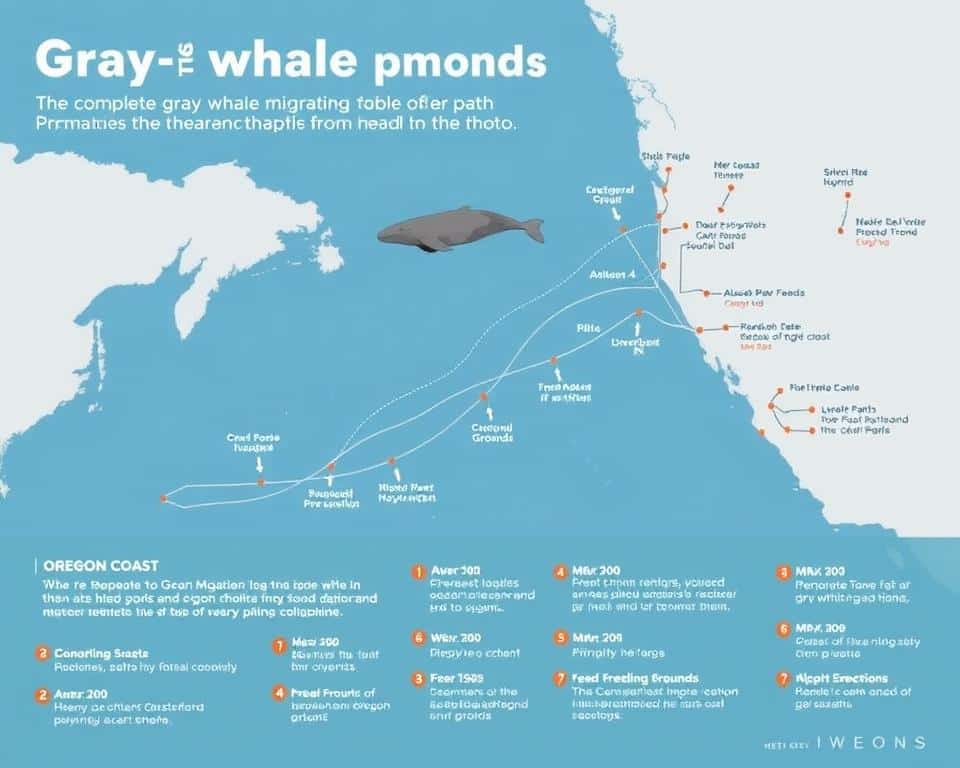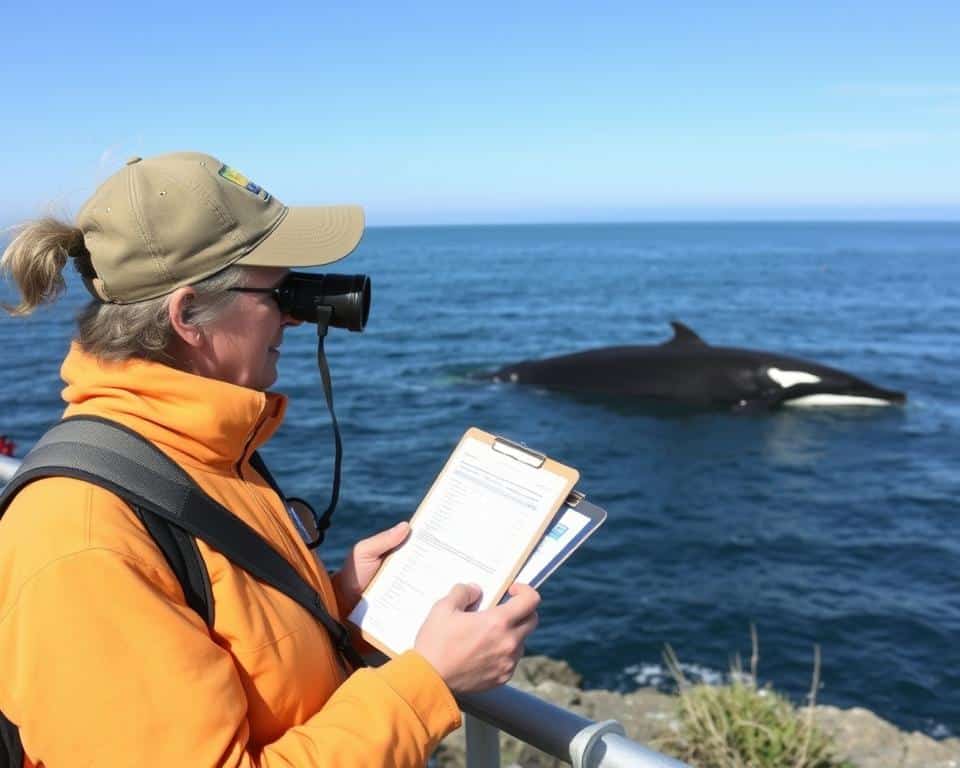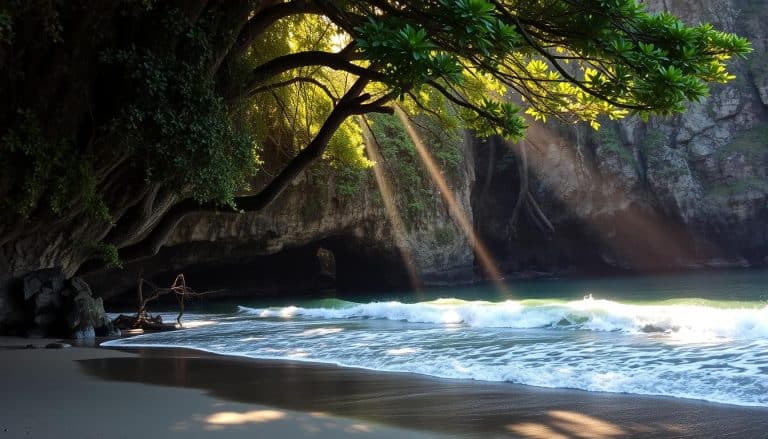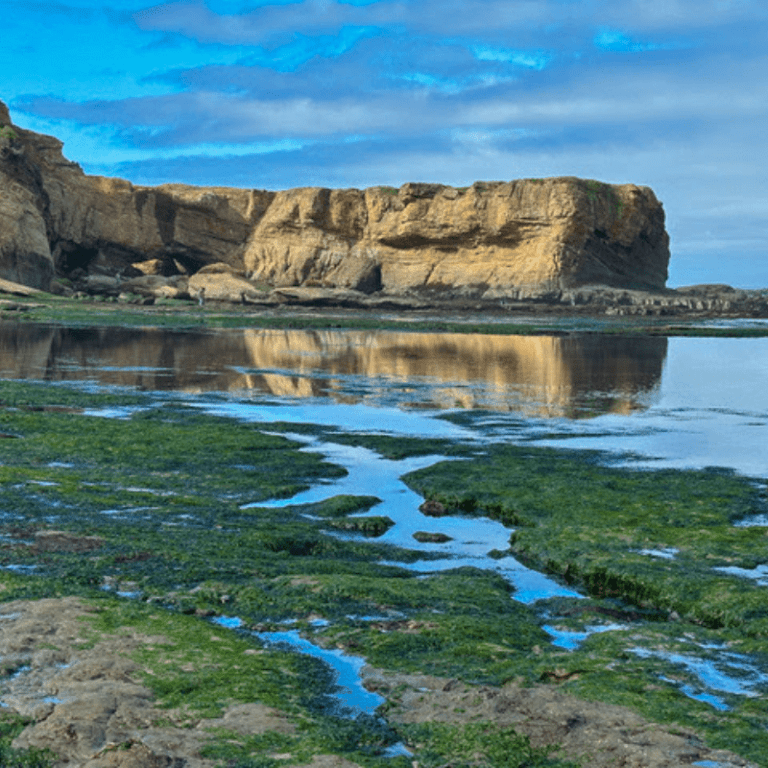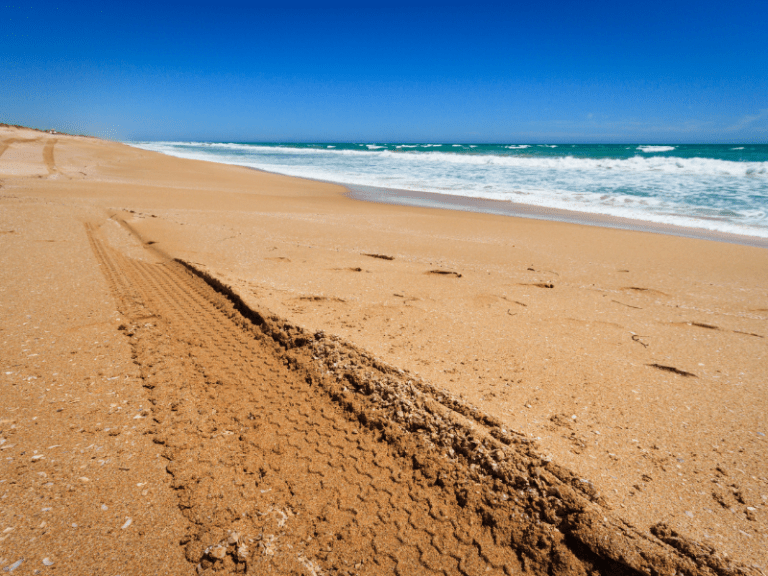Oregon Coast Whale Watching Seasons: When and Where to Spot Magnificent Marine Giants
This post may contain affiliate links. I may earn a small commission at no extra cost to you.
Oregon Coast Whale Watching Seasons: A Complete Breakdown
The Oregon coast experiences distinct whale watching seasons throughout the year, each offering unique opportunities to observe different species. Understanding these patterns helps visitors plan their trips for optimal viewing experiences.
Gray Whale Migration Seasons
Gray whales dominate the Oregon coast whale watching scene with two major migration periods:
Winter Migration (Mid-December to Mid-January)
Approximately 20,000 gray whales travel south from their feeding grounds in the Bering Sea to the warm lagoons of Baja California, Mexico. During this period, whales typically move at a steady pace, often staying 3-5 miles offshore.
Spring Migration (Late February to May)
The northbound journey brings whales closer to shore as they travel with newborn calves. This slower migration provides excellent viewing opportunities, with mothers and calves often coming within a half-mile of the coastline.
Summer Resident Whales (June to Mid-November)
A unique population of 200+ “resident” gray whales remains along the Oregon coast during summer and fall. These whales feed in the kelp-rich waters, particularly around Depoe Bay, offering reliable sightings outside the main migration seasons.
Other Whale Species Seasons
Orcas (April to May)
Transient orca pods can be spotted during spring as they hunt for seals and sea lions. While less predictable than gray whales, these magnificent predators occasionally appear near headlands and seal rookeries.
Humpback Whales (May to October)
Humpbacks have been increasingly observed along the Oregon coast during summer feeding seasons. Their spectacular breaching displays make them a favorite among whale watchers.
Climate Change Impacts
Recent years have shown subtle shifts in migration timing due to changing ocean temperatures. Some gray whales now arrive earlier in winter and stay later in spring, while feeding patterns for resident whales have become less predictable as prey distribution changes.
Stay Updated on Whale Migration Timing
Join our newsletter to receive alerts about whale migration patterns and optimal viewing times along the Oregon coast.
Top Viewing Locations Along the Oregon Coast
While whales can appear anywhere along Oregon's 363-mile coastline, certain locations offer consistently excellent viewing opportunities due to their elevation, offshore conditions, or proximity to whale feeding grounds.
Depoe Bay: The Whale Watching Capital
Known as the “Whale Watching Capital of Oregon,” Depoe Bay offers year-round sightings with a resident pod of gray whales that feed just offshore from June through mid-November. The Whale Watching Center provides an ideal indoor viewing location with knowledgeable staff and binoculars available for visitors.
- Elevated seawall with 180° ocean views
- Heated indoor viewing area for stormy weather
- Resident whales often visible within a half-mile of shore
- Educational displays and expert staff assistance
Best viewing coordinates: 44.8121° N, 124.0639° W
Cape Perpetua Scenic Area
Rising 800 feet above the ocean, Cape Perpetua offers the highest viewpoint accessible by car on the Oregon coast. On clear days, visitors can see up to 30 miles out to sea, making it perfect for spotting migrating whales during winter and spring seasons.
- Panoramic views from 800-foot elevation
- Visibility up to 30 miles on clear days
- Nearby visitor center with educational resources
- Multiple hiking trails with ocean viewpoints
Best viewing coordinates: 44.2865° N, 124.1103° W
Ecola State Park
Located at the northern end of Cannon Beach, Ecola State Park provides excellent vantage points for whale watching just steps from the main parking lot. The park's elevated position offers sweeping views of the Pacific, with migrating whales often visible during peak seasons.
- Multiple viewing points accessible by short walks
- Clatsop Loop Trail leads to additional viewpoints
- Picnic areas for comfortable extended viewing
- Spectacular coastal scenery even when whales aren't present
Best viewing coordinates: 45.9197° N, 123.9719° W
Neahkahnie Mountain Viewpoint
Located 13 miles south of Cannon Beach on Highway 101, Neahkahnie Mountain offers a dramatic roadside viewpoint between mile markers 41 and 42. During Oregon State Parks' Whale Watching Weeks, volunteers are often stationed here to help visitors spot passing whales.
- Easily accessible roadside viewpoint
- Elevated perspective for spotting distant spouts
- Volunteer assistance during Whale Watching Weeks
- Stunning coastal views regardless of whale activity
Best viewing coordinates: 45.7380° N, 123.9367° W
Boiler Bay State Scenic Viewpoint
Just north of Depoe Bay, Boiler Bay State Scenic Viewpoint offers sweeping panoramic views of the Pacific Ocean. This location is known for year-round gray whale sightings, particularly during summer when resident whales feed in the area.
- Picnic tables for comfortable extended viewing
- Aerial views of the entire bay
- Year-round resident whale sightings
- Bird watching opportunities (albatrosses, oystercatchers)
Best viewing coordinates: 44.8308° N, 124.0639° W
Whale Watching Tours & Ethical Viewing Practices
While land-based whale watching is popular and accessible, boat tours offer closer encounters and higher success rates for spotting whales. However, it's essential to choose operators that prioritize both passenger safety and whale welfare.
Recommended Eco-Certified Tour Operators
Dockside Charters (Depoe Bay)
- 50-foot vessels with heated cabins
- Experienced captains with decades of knowledge
- Year-round tours (weather permitting)
- Online booking discounts available
Whale Research EcoExcursions (Depoe Bay)
- Led by marine biologist Carrie Newell
- Small group experiences (6 passengers max)
- In-depth educational commentary
- Contributes to ongoing whale research
EcoTours of Oregon (Portland Pickup)
- Door-to-door service from Portland hotels
- Full-day coastal experience
- Combines whale watching with scenic stops
- All equipment provided (binoculars, etc.)
Book Your Whale Watching Adventure
Secure your spot on a guided whale watching tour during peak Oregon coast whale watching seasons for the best chance to see these magnificent creatures up close.
Ethical Whale Watching Guidelines
Land-Based Viewing Etiquette
- Stay on designated trails and viewing areas
- Keep voices down near cliff edges where sound carries
- Pack out all trash to protect marine environments
- Share spotting scopes and viewing areas with other visitors
- Report sightings to Oregon State Parks volunteers during Whale Watching Weeks
Boat-Based Viewing Guidelines
- Choose operators that follow NOAA wildlife viewing guidelines
- Boats should maintain 100+ yards distance from whales
- Vessels should not cut across a whale's path or separate groups
- Time with any single whale should be limited to 30 minutes
- Report operators who harass or closely approach whales
Climate Change Impact on Whale Migrations
Recent research indicates that changing ocean temperatures are affecting whale migration patterns along the Oregon coast. Gray whales are arriving earlier and staying longer in some areas, while food availability for resident whales is becoming less predictable. Supporting conservation efforts and choosing eco-conscious tour operators helps protect these magnificent creatures for future generations.
Essential Gear for Oregon Coast Whale Watching
The right equipment can significantly enhance your whale watching experience, especially during Oregon's variable coastal weather conditions. Here are our top recommendations for a successful outing:
Quality Binoculars
A good pair of binoculars is essential for spotting distant whale spouts and observing behavior. Look for models with 7x to 10x magnification and 42mm to 50mm objective lenses for optimal brightness and stability.
Our Top Pick:
Prism Binoculars
-
1080P Video Photo Recorder
-
32GB Card
-
12×32 Large View
-
FMC & BAK4 Prism
Waterproof Outerwear
Oregon's coastal weather can change rapidly, with misty conditions common even during summer. A quality waterproof jacket keeps you comfortable during extended viewing sessions.
Our Top Pick: Columbia Arcadia II
- Fully seam-sealed waterproof construction
- Breathable fabric prevents overheating
- Adjustable hood and cuffs
- Packable design for changing conditions
Photography Equipment
Capturing whale encounters requires specialized equipment. For smartphones, consider a clip-on telephoto lens; for DSLRs, a 100-400mm zoom lens provides versatility for distant subjects.
Smartphone Users: Moment Tele 58mm Lens
- 2x optical zoom for most smartphones
- Sharp edge-to-edge image quality
- Works with Moment phone cases
- Compact and portable design
Additional Recommended Items
- Spotting scope with tripod – For serious whale watchers, a 15-45x60mm spotting scope provides detailed views
- Weather-resistant daypack – Carries extra layers, snacks, and water
- Polarized sunglasses – Reduces glare off water, improving visibility
- Portable chair or blanket – For comfortable extended viewing sessions
- Field guide to marine mammals – Helps identify different species and behaviors
Photography Tips
- Use burst mode to capture breaching or spouting moments
- Set shutter speed to at least 1/1000 for sharp action shots
- Include coastline elements for scale and context
- Focus on areas where you see spouts rather than scanning constantly
- Consider shooting in early morning or late afternoon for best lighting
Prepare for Your Whale Watching Adventure
Get the right gear to make the most of your Oregon coast whale watching experience.
Educational Resources & Citizen Science Opportunities
Enhance your whale watching experience by learning about these magnificent creatures and contributing to scientific research efforts that help protect them.
Understanding Whale Migration Cycles
Gray whales undertake one of the longest migrations of any mammal, traveling 12,000+ miles round trip annually. Their journey from the Bering Sea to Baja California lagoons and back follows predictable patterns that make Oregon coast whale watching seasons so reliable.
The northbound spring migration is particularly noteworthy as mothers travel with newborn calves that gain approximately 9-10 pounds daily despite the mothers feeding very little during migration. By understanding these cycles, visitors can time their trips to coincide with peak activity.
For a deeper understanding of whale migration patterns and behavior, visit the Oregon State Parks Whale Watching website, which offers educational resources and migration updates.
Citizen Science & Reporting Sightings
Your whale observations can contribute valuable data to ongoing research efforts. Several organizations welcome citizen science contributions:
- Cascadia Research Collective – Submit gray whale sightings with photos for identification
- Happywhale – Upload whale fluke photos to help track individual whales
- Oregon State Parks Whale Watching Week – Report sightings to volunteers during designated weeks
When reporting sightings, try to note:
- Date, time, and specific location
- Number of whales observed
- Direction of travel
- Observed behaviors (feeding, breaching, etc.)
- Distinctive markings or features
These observations help researchers track population health, migration timing shifts, and the impacts of environmental changes on whale behavior.
Frequently Asked Questions About Oregon Coast Whale Watching
How do you spot a whale from shore?
The best technique is to scan the horizon with the naked eye for spouts, which can reach up to 12 feet high. Once you spot activity, use binoculars to get a closer look. Look for gray whales' distinctive heart-shaped blows and dark gray backs. Patience is key—spend at least 15-20 minutes at each viewpoint scanning methodically across the ocean.
What's the difference between the winter and spring migrations?
During winter migration (mid-December to mid-January), gray whales travel southbound to breeding grounds in Mexico. They typically move steadily and may stay further offshore. The spring migration (late February to May) brings northbound whales, including mothers with calves, closer to shore as they travel more slowly. Spring generally offers better viewing opportunities as whales come within a half-mile of the coastline.
Are boat tours or land-based viewing better?
Both offer different advantages. Land-based viewing is free, accessible, and less weather-dependent. It's ideal for those prone to seasickness or traveling on a budget. Boat tours provide closer encounters and higher success rates for seeing whales, plus expert narration about behaviors and ecology. The best approach is to combine both: spend time at elevated viewpoints and consider a boat tour for a more immersive experience.
How has climate change affected Oregon's whale watching seasons?
Researchers have observed subtle shifts in migration timing and feeding patterns. Some gray whales now arrive earlier in winter and stay later in spring. The distribution of prey species is changing with ocean temperatures, affecting where resident whales feed during summer months. These changes may eventually alter the predictability of traditional Oregon coast whale watching seasons, making citizen science reporting increasingly valuable for tracking these shifts.
Plan Your Oregon Coast Whale Watching Adventure
The Oregon coast offers some of the most accessible and reliable whale watching opportunities in North America. You can witness the awe-inspiring sight of these magnificent marine mammals in their natural habitat.
Whether you're watching the winter southbound migration, the spring northbound journey with calves, or the summer resident whales feeding near shore, each Oregon coast whale watching season provides unique opportunities to connect with these incredible creatures.
Remember to bring appropriate gear, practice ethical viewing techniques, and perhaps contribute your sightings to citizen science efforts. With proper planning and a bit of patience, your Oregon coast whale watching adventure will create memories to last a lifetime.
Ready for an Unforgettable Whale Watching Experience?
Book your whale watching tour during peak Oregon coast whale watching seasons and prepare for an amazing wildlife encounter.


